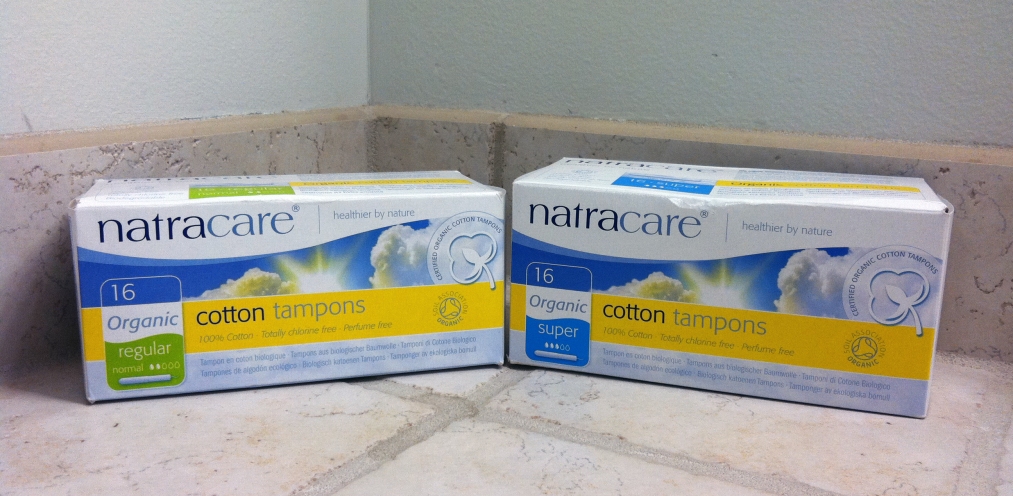The next green step my fiancé and I needed to think about was what type of insulation to use. The home we’re renovating had no insulation in the walls and regular fiberglass insulation in the ceiling. My fiancé removed all of the existing fiberglass insulation and found someone to come and take it off our hands.
During my online research I first came across eco-friendly insulation from recycled scraps of denim. I contacted a local showroom that carried this insulation called Ultratouch Denim Insulation, by Bonded Logic. I was able to get a sample and immediately knew this was not going to work for me. The insulation is easy to handle and does not itch like fiberglass insulation. According to their website Ultratouch contains no chemical irritants and requires no carcinogenic warning labels compared to other traditional insulation products. (It also) contains no harmful airborne particulates eliminating health concerns regarding particulates in the surrounding environment.”
This is great that there’s another option besides traditional formaldehyde laden insulation, but as soon as I put that sample of Ultratouch to my nose, I knew I was having a reaction. Each individual fiber is treated with a boron-based fire retardant. I can’t say for sure if that was the offending agent, but I started to sneeze immediately. Quickly my sinuses became irritated.
After a quick trip to Lowes, I came across Safetouch, by Dow Chemical. This is a polyester based insulation that is NOT treated with chemicals, is not fiberglass and is safe to touch and handle and breathe. I slept with a sample by my bedside and felt confident I had found my insulation.
Fortunately for us, we bought every batt they had in stock because about a week later we found out that Dow discontinued the product. I was so disappointed. I spoke with a customer service rep at Dow who said it just wasn’t cost effective enough to keep manufacturing. That is such a shame.
Here is the back kitchen wall insulated with Safetouch.

Now left with having to find insulation for the ceiling (Safetouch did not come in R-30), my fiancé and I choose GreenFiber. GreenFiber is made of non-toxic cellulose insulation, 85% of which comes from recycled paper fiber. GreenFiber is also treated with boric acid. “The boric acid flame retardant used in GreenFiber Insulation is infused in the natural fibers of the cellulose. During a fire, the retardant melts and holds the heat until the cellulose fibers char. The cellulose then becomes a layer of carbon protection, because the charred fibers won’t burn. The density of GreenFiber Insulation prevents the passage of flames and hot gasses, so fire does not spread as readily into GreenFiber -installed walls or ceilings, and GreenFiber Insulation restricts the amount of oxygen available to support combustion.”
I grabbed a small sample and did not react, so we bought enough to finish insulating the ceilings.

A couple of other eco-friendly insulation options are EnGuard GlassFree Polyester Insulation and Ecobatt by Knauf Insulation. Like SafeTouch, EnGuard is a 100% polyester batt insulation that does not contain any glass fiber, formaldehyde, VOCs or other harmful additives. Unlike SafeTouch, EnGuard contains 50% recycled content from PET plastic beverage bottles.
Ecobatt is primarily made from sand. According to their website, “ECOSE Technology works by converting natural organic materials into an inert polymer through a proprietary process to create an exceptionally strong binder that bonds glass wool insulation fibers together. ECOSE Technology delivers superior environmental sustainability, reduces embodied energy, and contains no phenol, formaldehyde, acrylics or artificial colors.” The binder they use is made using rapidly renewable organic materials, instead of the conventional non-renewable petroleum-based chemicals used in traditional binders.” Since the process is “proprietary” I could not find any more information on the composition of the binder used in this process.
Costco is selling Ecoblanket by Knauf Insulation. Here’s a picture I snapped a few weeks ago.

The only personal experience I have is with SafeTouch and GreenFiber. For more information on Ultratouch, EnGuard and Ecobatt please visit their websites linked here.
UPDATE: EnGuard Insulation

I was fortunate to have purchased all of the SafeTouch Insulation Lowes had in stock when it was time to insulate my home with a non-toxic option. SafeTouch is no longer available and had purchased the remaining stock. I spoke with Dow Chemical, the company that manufactured SafeTouch and they said the reason it was discontinued was simply because it was not profitable enough. That is a real shame since it is such an amazing insulation. It is mid-January and I only need one space heater to keep my little home comfortable.
In the future though, if I do need another insulation option, I will be going with EnGuard Insulation. As I stated above, like SafeTouch, EnGuard is a 100% polyester batt insulation that does not contain any glass fiber, formaldehyde, VOCs or other harmful additives. Unlike SafeTouch, EnGuard contains 50% recycled content from PET plastic beverage bottles.
I contacted the company and they sent me a free test sample. Unlike the denim insulation, EnGuard had NO smell whatsoever. I slept with the sample next to my bed on my nightstand for several weeks and had no adverse reactions of any kind. I would feel completely confident recommending this insulation.
Visit http://enguardinsulation.com/ for more information.

Tags: Boric Acid, Boron, Carcinogens, Cellulose, Chemical Sensitivity, Chemicals, Construction, Contracting, Cotton Insulation, Danger, Dangerous, Denim Insulation, Detox, Detoxification, Dow Chemical, Eco-Friendly, Ecoblanket, Ecose, EI, EnGuard, Environmental Illness, Environmentally Friendly, Fire Retardants, Flame Retardants, Formaldehyde, Formaldehyde Free, fragrance-free, Green Building, Green Building Materials, Green Fiber, Green Renovations, GreenFiber, Health, Healthy, Insulation, Knauf Insulation, MCS, Multiple Chemical Sensitivity, Petrochemicals, Polyester, SafeTouch, Toxic, Toxins, Ultratouch Denim Insulation

















